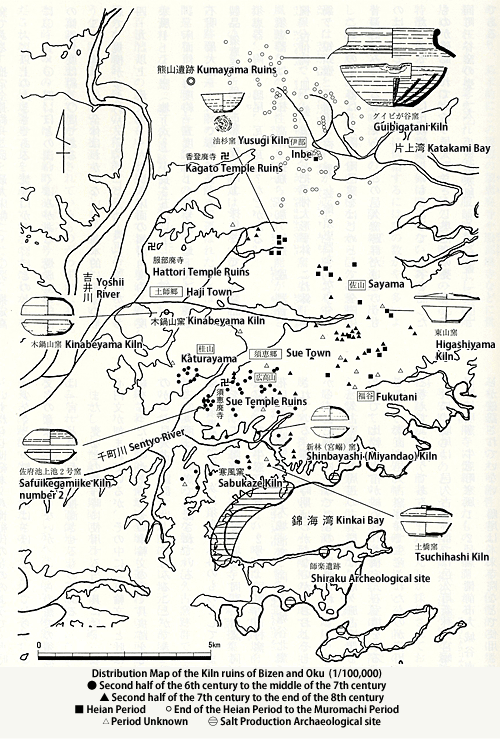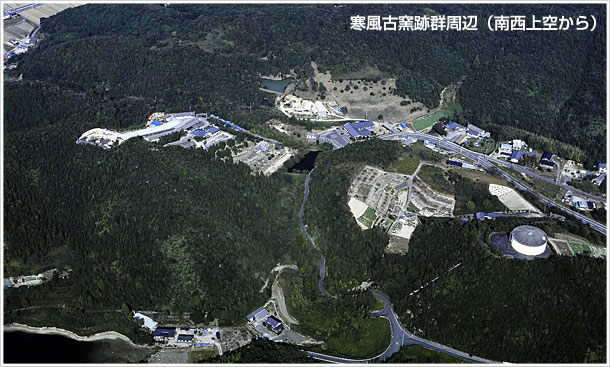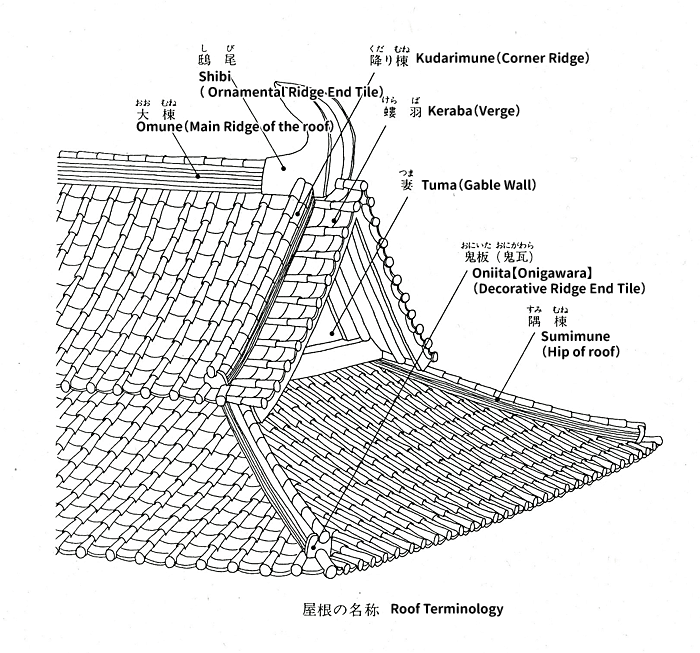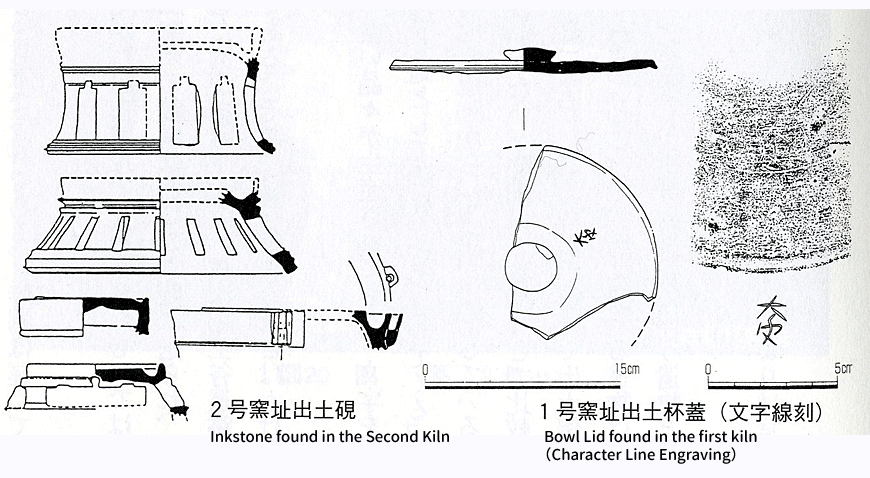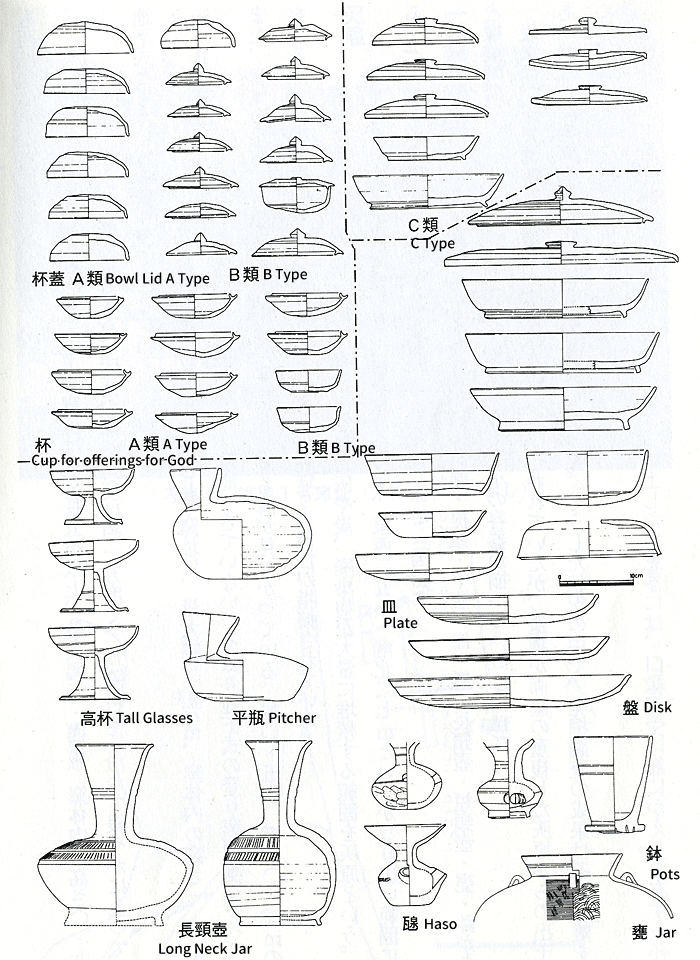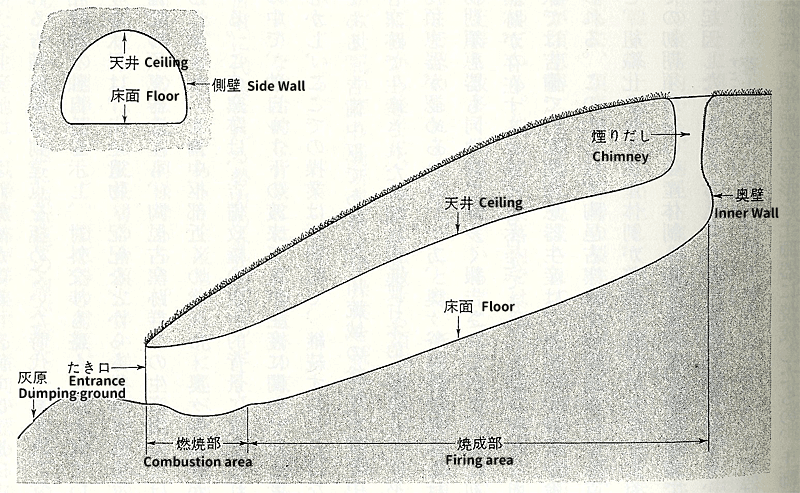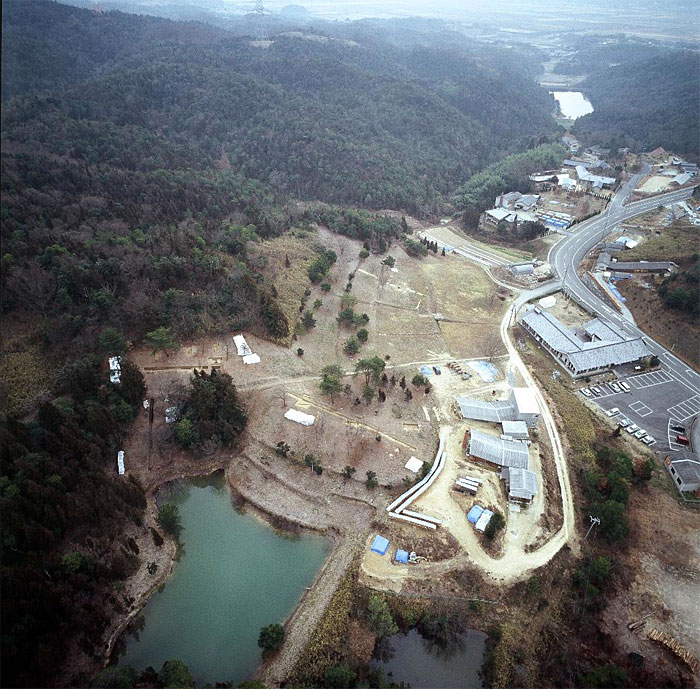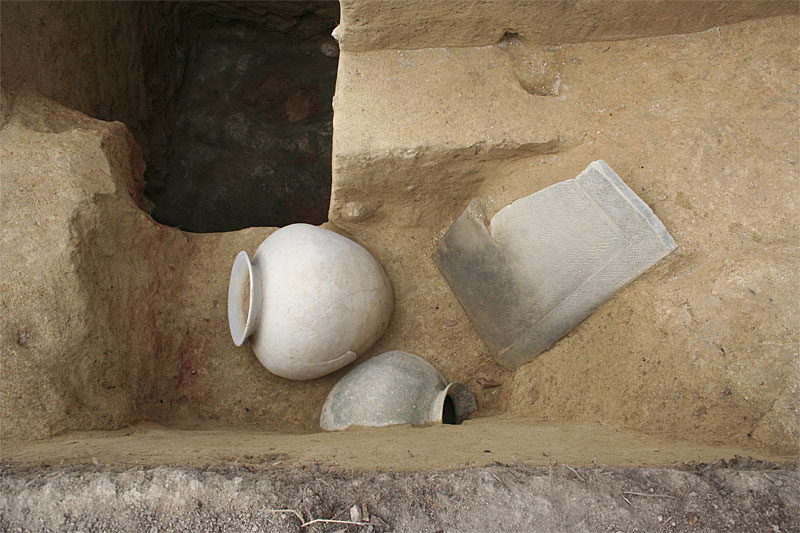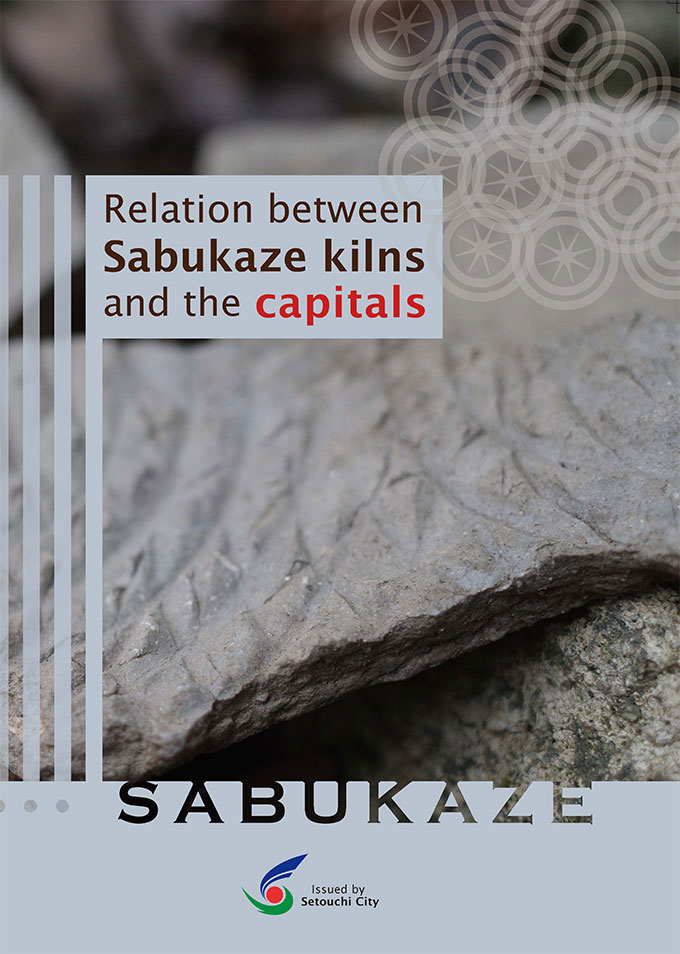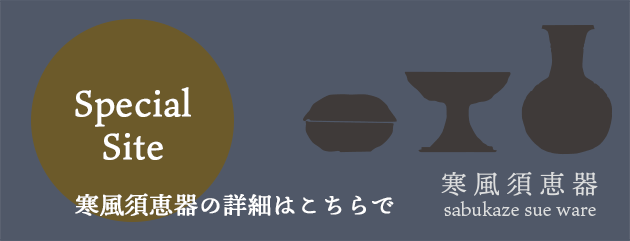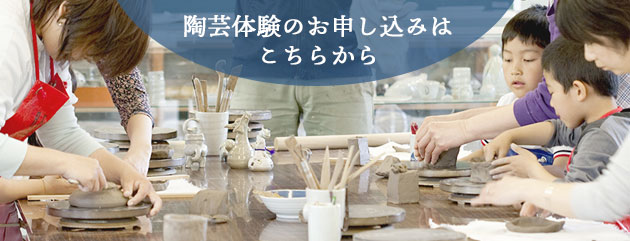The pottery ware here are named Sueki, or Sue pottery.
Sueki is pottery with a blue-grey colour that is baked in kilns. There are many different kinds of objects that are made, but the most common ones are cups in which you arrange food or offerings for the Gods, pots in which you would store liquids, such as water or sake, or food (rice, fruits, etc). Other objects such as takatsuki (tall glasses), haso, hiraka (pitcher), plates, disks, long neck jars, short neck jars, or pots were also made. The rarest objects were coffins made of clay called tokan, shibis (roof tiles used as roof decorations in temples), or suzuri (ink stone mortars for the grinding and containment of ink) used in places where letters are written such as government offices. The tokan in Sabukaze Koyo Sekigun has a lid that resembles the roof of a house. Many of them have strong regional characteristics used in ancient tombs in the southern part of Okayama Prefecture. Many shibis, or roof decorations, with fin patterns resembling those of temples in the city of Okayama and Osaka prefecture were found. There are also Sue pottery with letters carved on the front side, such as 大口or 上, but the meaning is unknown.
Sue pottery was brought to Japan in the Kofun period (around 1600 years ago) from the Korean peninsula by migrant engineers. They introduced new techniques that were not used in the pottery made until then, such as the Yayoi pottery or Haji pottery which were continuously made from the Jomon period (14,000-300 BC).
The first new technique was the use of a potter’s wheel. By using a wheel, they were able to more efficiently make bigger and better regulated objects.
The second one was the use of a kiln. By using a kiln, they were able to bake the ceramics at temperatures higher than 1000 degrees, there was less leakage, and they were therefore able to make stronger and harder objects.
In order to obtain the blue-grey colour of the Sue pottery, the kiln is closed up right at the final stage of the baking, therefore creating oxygen insufficiency. This oxygen reduction will lead to a deoxidisation of the iron oxyde in the the clay. This Sue pottery made in an ‘oxygen reduction atmosphere’, in which chemical reaction were skilfully handled, is also known as the ‘ancient high-tech goods’. In addition, in order to see the green glazing of the Sue pottery, they cover it with the ash of burnt firewood, and melt it.
